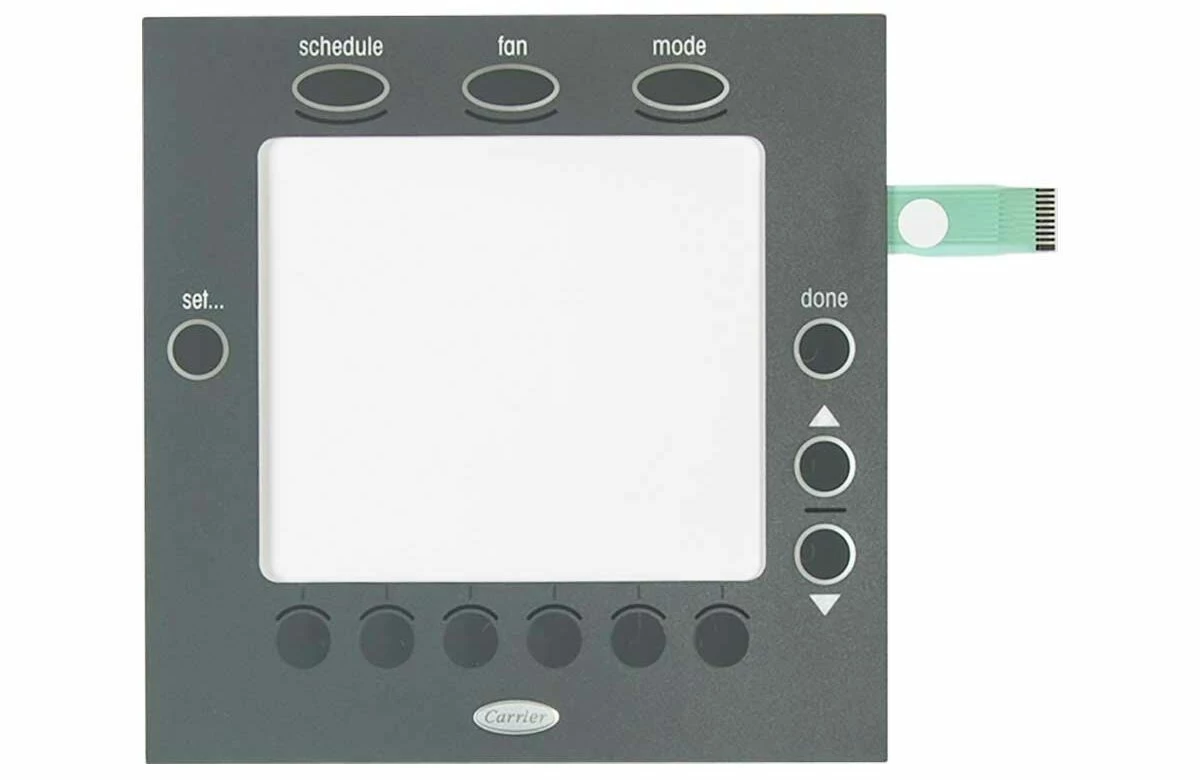Explore the Value of Membrane Switches in Streamlining Tool Controls
Explore the Value of Membrane Switches in Streamlining Tool Controls
Blog Article
Discover the Future of Control Interfaces: Why Membrane Layer Changes Are Getting Appeal
As industries progressively prioritize efficient and user-friendly control interfaces, membrane buttons are emerging as an engaging remedy that integrates functionality with layout versatility. Their durability and small nature make them particularly fit for a selection of applications, from medical care to customer electronics. With the increase of smart innovation and sustainability worries, the innovations and abilities surrounding membrane layer switches over warrant closer examination. What specific advantages do they offer that could redefine our interactions with innovation in the coming years?
Understanding Membrane Switches
Membrane layer switches are indispensable elements in modern-day electronic tools, serving as interfaces between users and devices. These switches are composed of several layers, generally including a graphic overlay, a spacer layer, and a circuit layer.

Toughness is another essential attribute, as membrane layer buttons can be developed to resist environmental elements such as moisture, dust, and chemicals. This resilience makes them suitable for applications in harsh conditions. In general, understanding the framework and feature of membrane layer switches is vital for valuing their duty in the development of interface in today's technology-driven globe.
Trick Advantages of Membrane Layer Switches
Using a range of advantages, membrane layer switches have actually come to be a recommended option in numerous applications (Membrane Switches). Among the primary benefits is their small design, enabling manufacturers to optimize area in tools without compromising functionality. Membrane layer buttons are light-weight, which is especially useful in portable electronic gadgets

In addition, these buttons provide superb toughness. Constructed from versatile materials, they are immune to dust, dampness, and a variety of environmental factors, making them appropriate for severe problems. This toughness commonly equates right into a much longer life-span compared to traditional mechanical buttons.
In addition, membrane changes permit seamless integration of graphics and symbols, using aesthetic versatility and improving customer experience. Customization alternatives are extensive, making it possible for brands to produce unique user interfaces that align with their product identification.
One more secret advantage is their ease of cleaning and maintenance. The flat surface area of membrane layer switches protects against the accumulation of dirt and crud, making them ideal for hygienic atmospheres. Finally, membrane layer switches are cost-efficient, as they can be generated in high volumes at reduced expenses, making them accessible for a variety of markets. These elements jointly add to their increasing appeal in contemporary control interfaces.
Applications Throughout Industries

A myriad of sectors are significantly taking on membrane switches due to their flexibility and functionality. These regulate interfaces are particularly prevalent in the automotive industry, where they are used in control panels and infomercial systems, supplying a smooth and easy to use interface. In the clinical field, membrane switches promote the operation of analysis tools and individual monitoring systems, making certain reliability and convenience of usage in crucial scenarios.
In addition, the consumer electronics industry take advantage of membrane switches in tools such as microwaves and push-button controls, permitting streamlined layout and boosted sturdiness. Membrane Switches. The aerospace sector also makes use of membrane buttons in cockpit controls, where room restrictions demand portable and effective design options
Furthermore, the industrial field uses membrane layer switches in equipment control board, providing strength against harsh environments and ensuring operational performance. Retail atmospheres have embraced membrane layer switches in point-of-sale systems, enhancing user communication while preserving visual charm.
Style Patterns in Membrane Layer Buttons
Evolving together with technological advancements, design fads in membrane switches are progressively concentrated on enhancing user experience and aesthetic charm. Modern membrane switches are being designed for simplicity and user-friendly use, permitting individuals to browse user interfaces effortlessly. This change towards user-centric style highlights tactile responses, making sure that customers receive prompt confirmation of their actions.
In addition, adjustable graphics and colors are becoming standard features in membrane button layouts. This flexibility permits makers to find here develop customized user interfaces that line up with branding and specific customer needs. The incorporation of backlighting is another prominent trend, as it not only enhances visibility in low-light problems however additionally adds an aesthetically striking aspect to the total style.
Furthermore, the pattern in the direction of slim and light-weight materials is acquiring traction, enabling sleeker styles that can perfectly incorporate right into numerous applications. This change not only boosts aesthetic appeals but additionally adds to the total capability and durability of the buttons. Green materials are progressively being made use of, reflecting a wider movement towards sustainability in product style. These design patterns collectively underscore the growing significance of incorporating type and feature in the development of membrane buttons, inevitably enriching the user experience.
Future Outlook for Control Interfaces
The future of control user interfaces is positioned for significant transformation as emerging modern technologies proceed to improve individual communications across different tools. The combination of advanced products, such as conductive inks and versatile electronic devices, will certainly boost the flexibility and performance of membrane switches, making them progressively adaptable to a variety of applications. Additionally, the rise of the Web of Things (IoT) will certainly drive need for even more intuitive, easy to use user interfaces that can flawlessly integrate with smart tools.
As expert system and artificial intelligence progress, regulate user interfaces will likely integrate even more customized functions, permitting individuals to engage with gadgets in manner ins which are tailored to their routines and choices (Membrane Switches). This change towards user-centric layout will certainly place membrane buttons as a principal in the marketplace, particularly in sectors like health care, vehicle, and customer electronics
In addition, the press for sustainability will encourage makers to check out environment-friendly materials and manufacturing methods, ensuring that the future of control user interfaces straightens with ecological considerations. On the whole, as modern technology remains to advancement, membrane layer buttons will come to be significantly advanced, paving go to my site the means for ingenious control remedies that improve customer experience and functional efficiency across varied markets.
Conclusion
In conclusion, the raising adoption of membrane changes highlights their significance in advice the evolution of control user interfaces. As straightforward interfaces become essential in the context of IoT and AI improvements, membrane switches are positioned to play a crucial duty.
As markets increasingly prioritize user-friendly and effective control interfaces, membrane switches are emerging as a compelling option that integrates performance with design versatility.Toughness is an additional essential function, as membrane layer switches can be designed to stand up to environmental factors such as moisture, dust, and chemicals.Evolving alongside technological innovations, design patterns in membrane layer buttons are increasingly concentrated on boosting customer experience and visual charm. Modern membrane switches are being made for simpleness and intuitive usage, permitting individuals to browse interfaces effortlessly. These design trends collectively emphasize the expanding importance of combining type and function in the advancement of membrane layer buttons, inevitably improving the individual experience.
Report this page